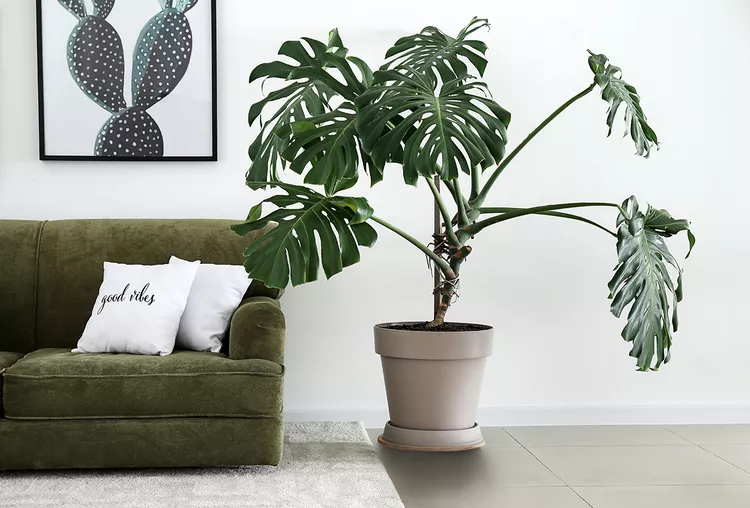Through social media, millennials have rekindled a love of houseplants. One plant has become especially famous—or at least Instagram-famous. It’s immediately evocative of a tropical rainforest: huge, dark green, waxy leaves, with interesting perforations in them that don’t even imply poor care. This is Monstera deliciosa. Or is it a split-leaf philodendron?
The monstera, as it’s often called, is tropically native to Mexico, where it’s mainly prized for its fruit (hence the scientific name). But it also thrives as a houseplant: It doesn’t need much water, tolerates medium amounts of sunlight, and can grow impressively large.
This is also a plant with a wide variety of names, many referring to its tasty fruit (“fruit salad plant,” “monster fruit”) and some to its leaves. Those leaves, in the right environment, develop holes. “Swiss cheese plant” is one monstera nickname that references to those holes. Another is split-leaf philodendron.
Philodendrons are a pretty large genus of flowering plants; if you’re into gardening, you’re probably familiar with some of its members, like the peace lily. But the monstera is not, technically speaking, a philodendron at all.
Both the monstera and true philodendrons are part of the arum family, a much larger group of plants that also includes the ever-popular pothos, one of the world’s prettiest and easiest houseplants. These plants are all pretty similar: They have similar water and light needs, they come from roughly the same climate, and they contain calcium oxalate, which makes them toxic to both humans and pets. Many of these plants have interesting leaf shapes, with lacy fingers, broad lobes, heart-shaped leaves, or bright pink veins. The monstera certainly looks and acts like a philodendron, even though it isn’t classified as one.
This is where it gets complicated. There are two true species of philodendron that also go by the name split-leaf philodendron: Philodendron bipinnatifidum and Philodendron selloum. These plants are both completely different plants than monstera, but go by the same nickname in some cases. No wonder we’re confused!
Plant naming can be tricky, with plants having totally different names depending on where you are or who’s describing them. Common plant names can even differ by region and generation. You might want to start brushing up on your Latin names!




















